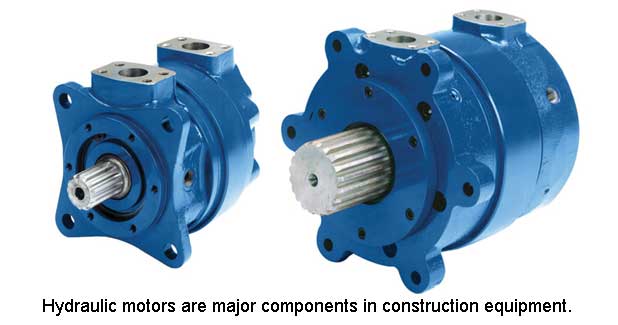
Propelling Performance
Hydraulic Motor is an actuator where the hydraulic power is converted to rotational power. This can be unidirectional or bidirectional depending on the system design. Hydraulic motors are used in any application where the output of mechanical rotational energy is required. Their execution is just as varied as their application, coming in motor types such as orbital, vane, gear and the major piston types-bent-axis, radial and axial. Motors convert hydraulic energy into mechanical rotational energy.
Hydraulic motors are the major components of mobile construction equipment such as compactors, skid steer loaders, excavators or in horizontal drilling machines. Hydraulic motors are today the state-of-the-art technology of drivetrains. Normally, hydraulic motors are used for machines requiring high torque and working in difficult environment. Hydraulic motors are also fitted on other applications where it is required a significant torque. In one machine with hydrostatic transmission, you have typically a diesel engine connected with a hydraulic pump which creates the oil flow that reaches the hydraulic motors that normally are located in the machine's wheels. The motors will then generate a torque to allow the machine to move in all planned conditions.
Owing to a major emphasis to be more productive and cost-effective at the same time, new technological innovations mostly focus on making components more and more efficient.
One can find several types of hydraulic motors, depending on the job to perform. There are different types of hydraulic motors, such as hydraulic gear motors, piston motors and hydraulic vane motors.
The motor selection comes first in the hydraulic system because application design best practices require that one starts with the load requirement, and then work back to the pump that will put the fluid power into the motor selected to deliver the performance goal.
Each motor type has a specific performance profile. So, knowing the application performance requirement and which motor type best meets the objective is the first step. Then it's necessary to evaluate the cost of your motor options along with the degree of complexity you want for the overall system.
Selection of a suitable motor for an equipment is influence by certain key factors such as: Performance needs of the application, load and amount of break away and running torque needed, shaft speed and horsepower, operating pressure and flow, displacement type: fixed or variable, operating temperature, leakage potential, motor design and type of controls used-mechanical or electronic.
Looking at the current industry trend, hydraulic motors market is going to pick up in the coming years with many long term infrastructure projects are coming up which will require high performance equipment and machinery. Hydraulic motors will definitely share its bit to meet this demand pick up.


 +91-22-24193000
+91-22-24193000 Subscriber@ASAPPinfoGlobal.com
Subscriber@ASAPPinfoGlobal.com